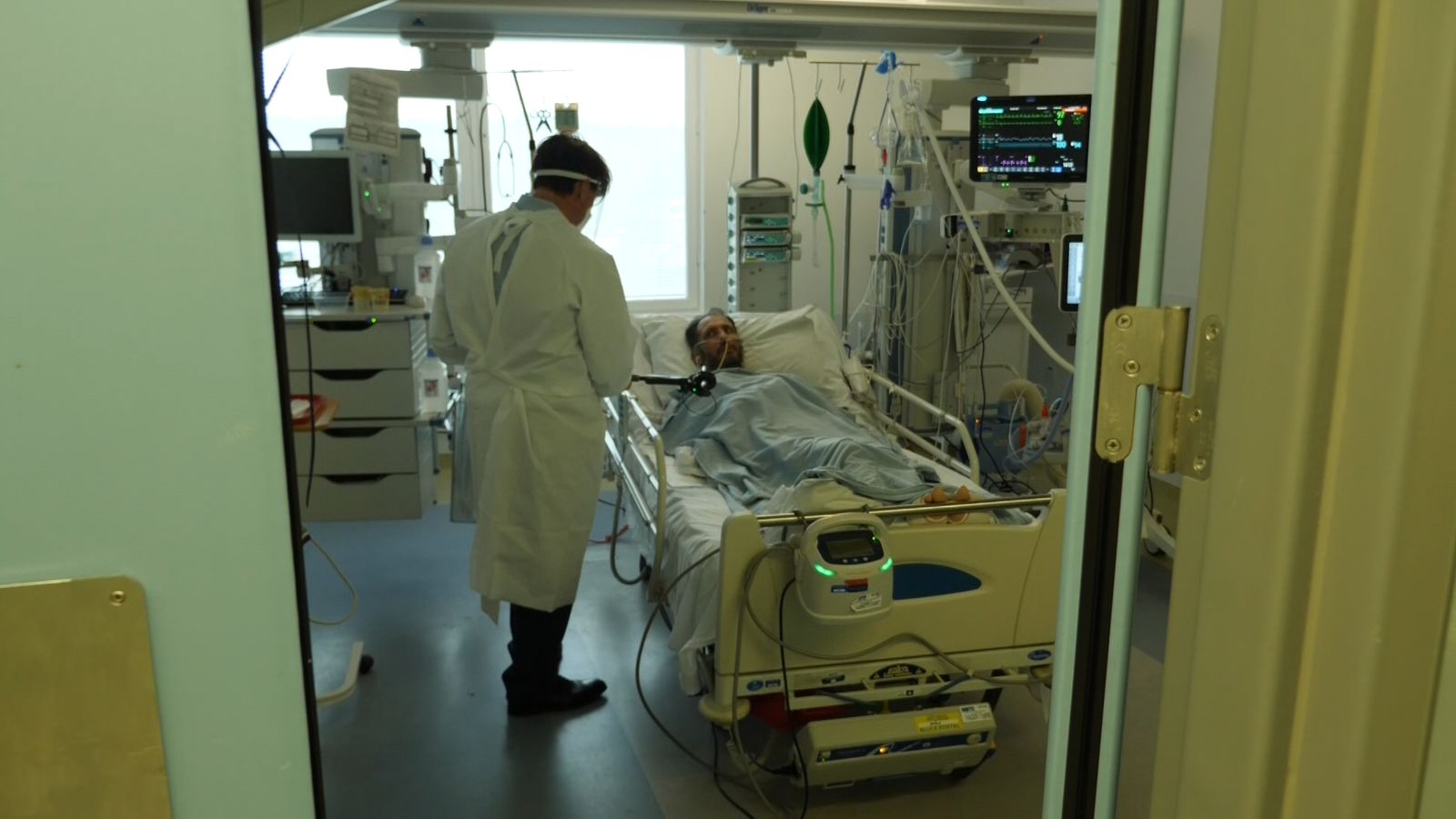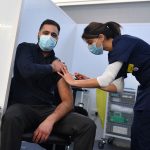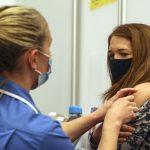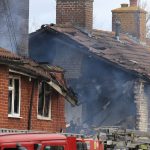Jasem Nissi has woken up in a nightmare. He can’t move his legs. His arms are shaking. His strength is gone.
His hand quivers over some white gauze on his neck where doctors removed the tube that had been necessary to keep him alive.
His predicament is something we saw often on television this time last year when a “tsunami of patients” (as one nurse put it) arrived at hospitals with COVID, many needing intubation to sustain their oxygen levels.
It’s been a year since I first walked into the intensive care unit on the 4th floor of the Royal Free Hospital in north London and witnessed unprecedented scenes, during the second wave of the pandemic.
Things have changed. Today, the ward looks emptier. Last year they had more than 90 COVID patients in ITU and 300 in the hospital, today there are just 10 in ITU, and around 90 overall.
But the very sick seem younger than before. Mr Nissi is 48 years old and several others on the ITU ward are a similar age or younger still.
After two months of support he can just about breathe by himself, although the CT scan of his lungs show multiple threads of white fibrosis; a scarring that may never fully clear.
Downing Street party row: Scottish Conservative leader Douglas Ross demands Boris Johnson reveal ‘right now’ whether he attended lockdown drinks
COVID-19: UK records 379 more coronavirus-related deaths and 120,821 new cases, daily figures show
Government has ‘careless’ attitude to standards and should not use WhatsApp for official business, parliamentary watchdog says
“I’m worried,” he says. “I want to walk – but in this position I can’t. My body is shaking because I’m very weak and my hand when I want to eat it’s shaking and I feel very cold – freezing.”
“Did you get vaccinated?” I ask.
“No – I was lazy to be honest with you. Every day I said tomorrow, tomorrow…
“It was a big mistake.”
Steve Ward, the ITU consultant treating Mr Nissi tells me: “While over 80% of the population is double vaccinated, over half of patients in ITU are not. So, the risks of not being vaccinated seem to speak for themselves on the intensive care unit.
“It does (the vaccination) seem to keep you out of the intensive care unit which is a benefit for that individual, but its also a benefit to other individuals you’ve seen today (in the hospital) – it allows beds to be available for people who are having cancer operations and other needs.”
The clinical white silence of the ward is as before, as is the smell of the medical grade face mask against the nose and the gentle soothing voices of nurses who monitor and tuck sheets and administer medication.
This time, at least, they are not dealing with ratios of three or four patients per nurse as they were a year ago.
When I last saw nurse Harriet Goudie, in January 2021, a patient under her care had just died from COVID. Things have improved she says, but there are staff shortages.
COVID news live – updates from the UK and across the globe
She said: “We’ve got a big issue with burnout, because actually, even though we are not at those high numbers, we’ve never gone back to normal ICU pre-Covid. That’s never really happened – so even though we’ve gone back to more manageable numbers we are still very, very stretched.”
Please use Chrome browser for a more accessible video player
Staff and bed shortages is a universal problem across the hospital. Staff absence in the Royal Free is above 6%, whereas pre-pandemic averages were 3.5%.
In the cardiology department – a patient is being operated on and needs a post-operative bed. But the hospital is at full capacity and there are competing needs.
Nurse Rui Tinoco explains: “Currently, we have a patient in A&E who is waiting for a cardiac bed, and we have currently this patient behind us that is undergoing a cardiac procedure and they are both allocated to the same bed on the ward.
“So we are waiting for the managers in the hospital to let us know the bed status upstairs, to see if we can go ahead with this procedure and the need to balance the clinical priority between both patients.”
In the cancer department I speak to Marion Order who is 78. Diagnostic delays in another hospital, due to COVID, mean she’s now facing a more complex operation than she might have done.
She said: “The delay is the appointments at the hospitals, and then a delay in waiting for the scans, and then you have to wait for the result to your GP or for the hospital appointment – and these things I appreciate all take time – but there are all these delays.”
One of the biggest concerns in the cancer department is that people didn’t come forward during the pandemic soon enough and now their conditions have deteriorated.
Mr Leye Ajayi, a consultant urological surgeon, says the messaging at the beginning of the pandemic has left him with problems.
“‘Stay at home’ was the message – people did stay at home – and we are still dealing with the consequences of staying at home.”
Mr Ajayi has just come from seeing a patient who delayed coming to hospital after being referred by his GP, because he was worried about catching COVID.
He said: “He was found to have a raised PSA which is a risk of prostate cancer. His GP referred him to us but because he was anxious about going to hospital he delayed presenting to us. He was anxious about coming in and catching Covid, rightfully.
“Unfortunately when we eventually got round to seeing the patient his cancer had already spread.
“So we are now dealing with a young patient in his mid-fifties, who if we’d seen him a year ago – could have offered him curative surgery – we’re now dealing with palliative care.”
In a sense then, COVID has another victim – but through cancer. According to Mr Ajayi this is a consistent and sad consequence of the pandemic.
The Royal Free, like every hospital in the country, is feeling exceptional pressures, but for people with concerns about serious conditions – the message is don’t stay at home – get seen. And get jabbed.






















